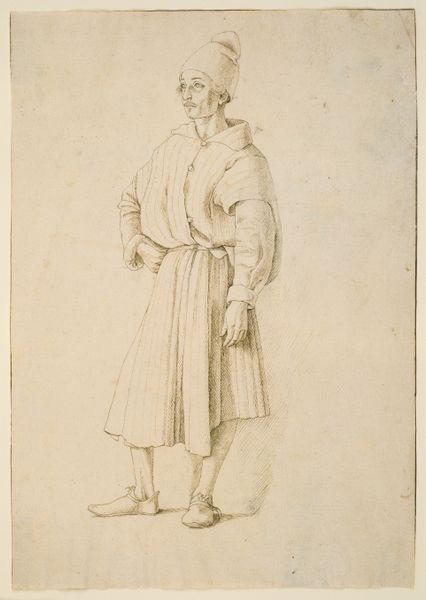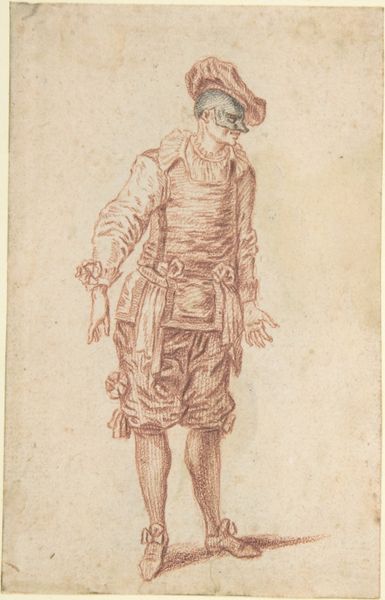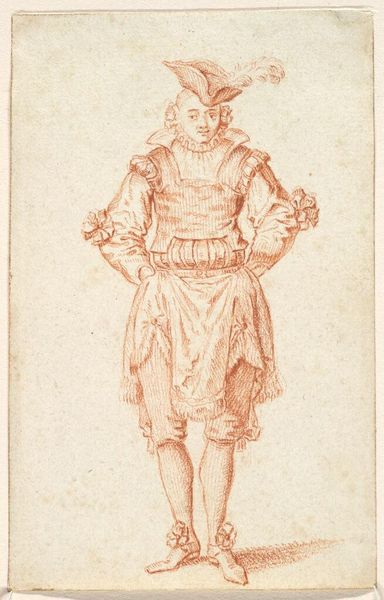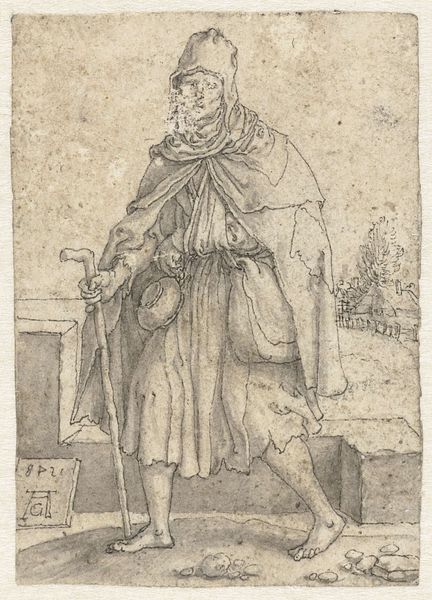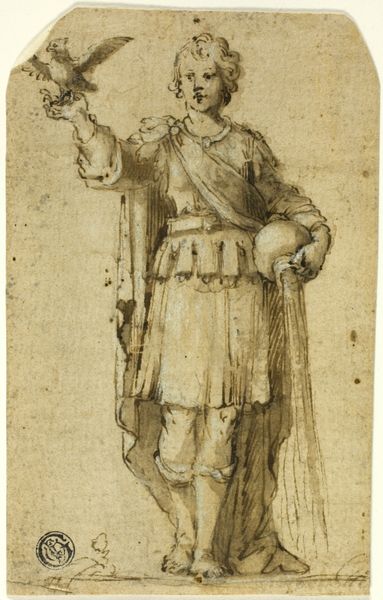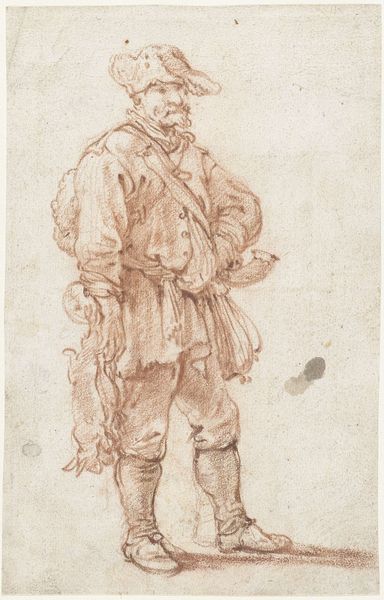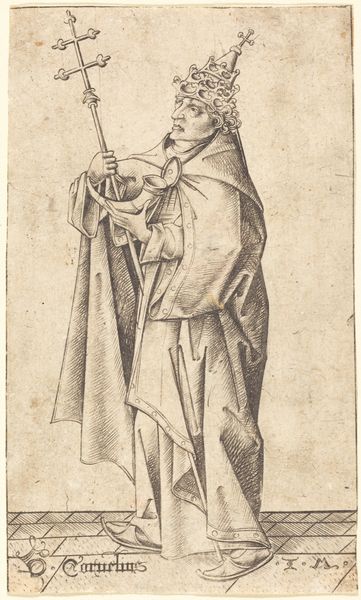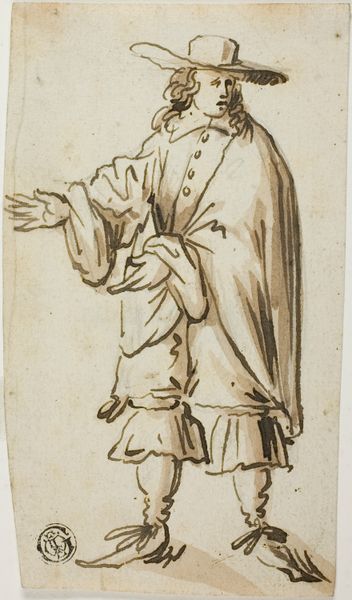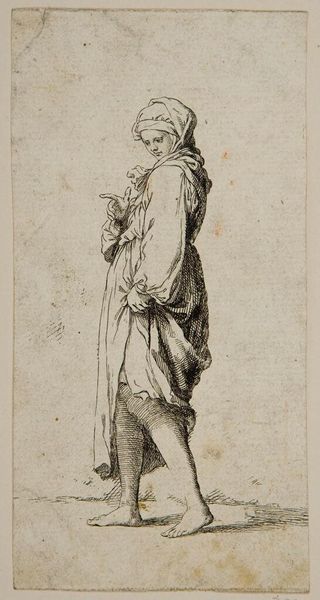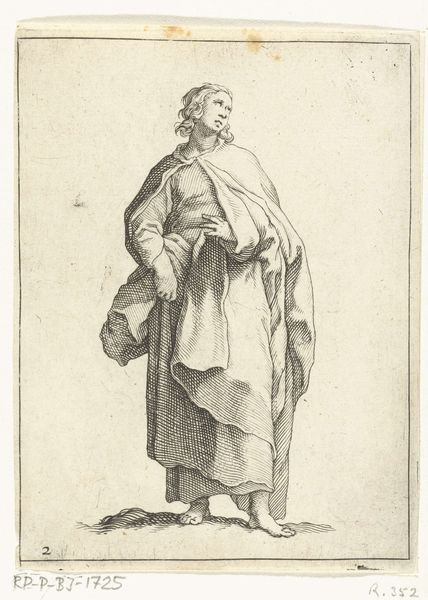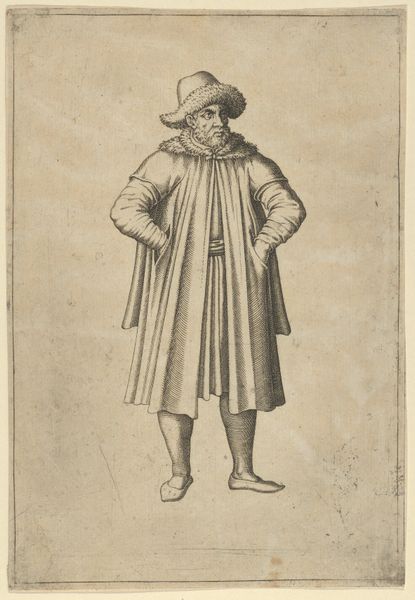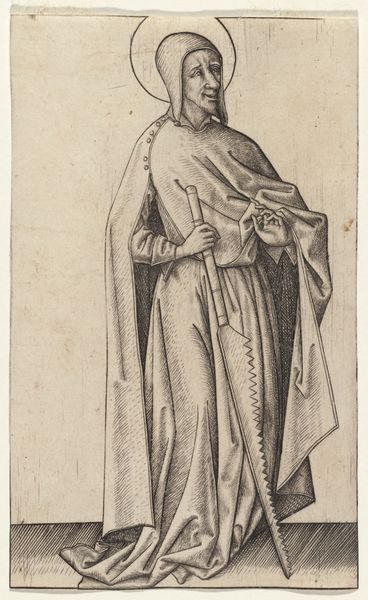
Dimensions: 4 15/16 x 3 1/8 in. (12.5 x 8 cm)
Copyright: Public Domain
Editor: Here we have Claude Gillot's "Crepin's Master," a red chalk drawing from somewhere between 1685 and 1722. It's at the Met, and it kind of reminds me of a costume sketch, very theatrical. I’m curious, what story does this drawing tell you? Curator: Oh, that's lovely! The theatrical element you pinpoint is spot on. To me, it whispers of the commedia dell'arte, those masked improvisational comedies so popular in that era. Look at the figure’s posture – the slightly turned-out feet, the almost coyly clasped hands. Does it evoke a particular character for you? Maybe a fussy merchant or a puffed-up nobleman? Editor: Hmm, I hadn't thought of commedia dell'arte, but I see it now. He does look a bit…precious? Curator: Precious! Exactly! It’s that hint of self-importance Gillot captures so well. And think about red chalk as a medium; it's so immediate, so perfect for capturing fleeting impressions. Do you see the sketchiness, how the lines almost dance on the page? Editor: Definitely! It feels very spontaneous, like we're catching a glimpse of a real person, not just a character. But 1685-1722 is quite a wide date range; what's behind that? Curator: Ah, art historical detective work! The dating comes down to stylistic analysis. Gillot’s earlier work is more tightly controlled, while his later drawings have a freer, more fluid line. Pinpointing exactly where this sketch falls is part of the ongoing scholarly conversation. What I adore most is its intimacy, how it invites us to play along and invent his story, and wonder, I wonder, where *was* he going? Editor: That’s such a good point. I went from seeing a sketch to seeing a possible performance. Curator: Yes, you found an essence that transcends art history. I think that is beautiful and inspiring!
Comments
No comments
Be the first to comment and join the conversation on the ultimate creative platform.
